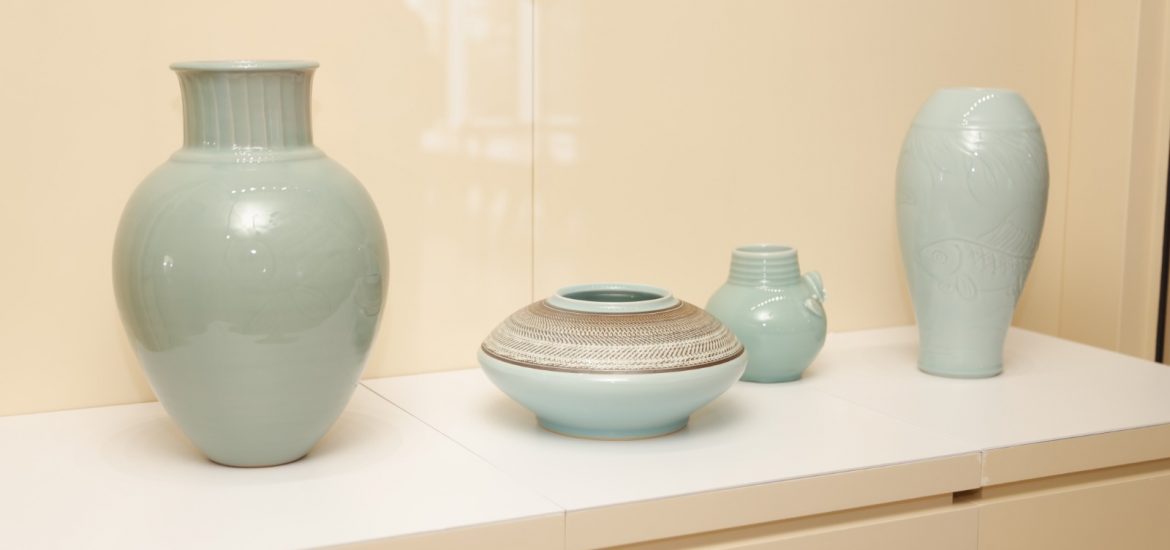Sun Museum is a not-for-profit gallery located on the thriving Kwun Tong waterfront, one of the economic hubs not commonly reported on when it comes to Hong Kong. The Sun Museum, directed by Mr. Yeung Chun Tong, chose to open here deliberately, to offer something new to a nascent neighborhood and to broaden the horizons of possibility for Hong Kong’s art and culture scene. Specifically, it aims to foster the development of arts and culture in Hong Kong and China through exhibitions, seminars, and educational activities.
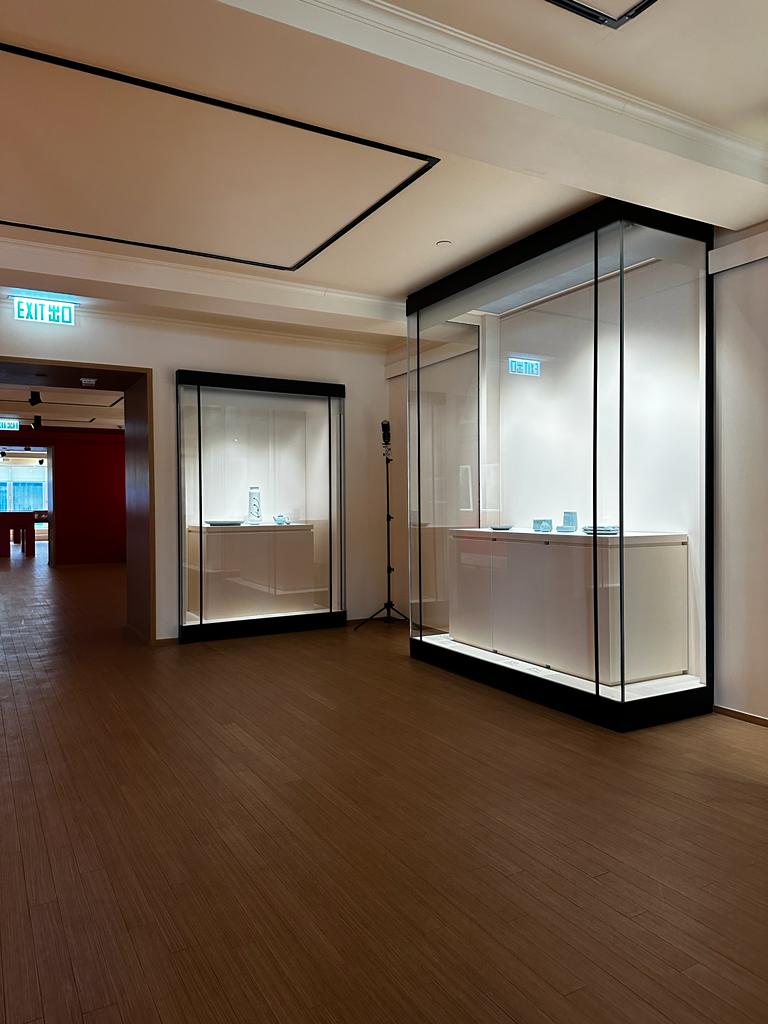
One of its most recent is an exhibit featuring two artists: “Colour by Wong May Lee” and “Colour by Lam Yi Kei.” Both are senior artists on the Hong Kong scene with completely different specialties. Ms. Wong is a potter, while Mr. Lam is an oil painter. But their contrasting interests come together surprisingly well in this exhibit with the tagline, “Extraordinary Artistic Journeys Inspired by Ancient and Modern Classics.”
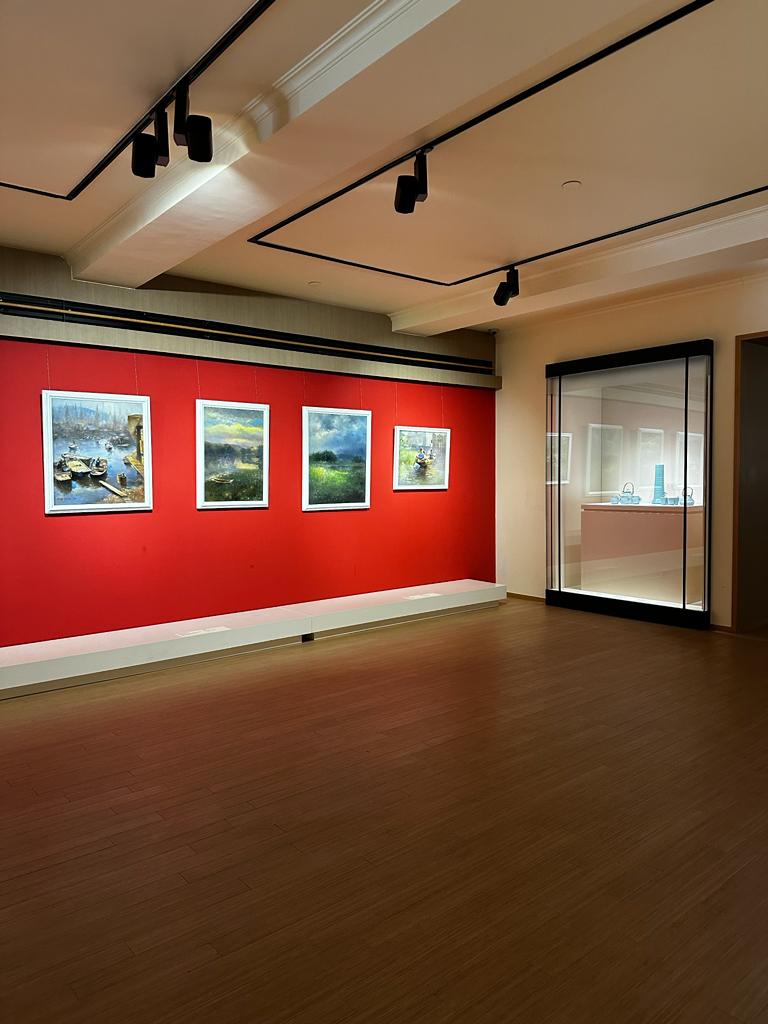
The dual-exhibit runs from 25 August to 7 October and showcases 85 ceramic creations and precious ancient kiln finds by Ms. Wong, and 30 oil paintings by Mr. Lam. Given the sheer volume of works displayed, it is impossible to do justice to each specific piece. While I admire many of Mr. Lam’s paintings, particularly his nostalgic series of Hong Kong streets, ports, and ships, I came to Sun Museum for Ms. Wong’s ceramics, which hearken back to some of China’s most precious kilns. I will explore Mr. Lam’s nostalgia series at later point.
In fact, I will focus on not even Ms. Wong’s broader repertoire, but specifically her celadon works from the Longquan kilns. From making wheel-thrown vessels to handbuilt clay sculptures, she has experimented with diverse pottery-making and firing techniques, including reduction effects in raku firing (pottery-making and firing technique invented in Kyoto in the 16th century), or enjoying zisha or purple clay from Yixing. She is effectively a living encyclopedia of Chinese ceramics.
Physical expressions of Chinese sophistication and artistic taste were shaped in the literal fires of the kilns. The Longquan kilns in Zhejiang and Fujian provinces, which produced “greenware” or celadon from 950–1550, were among the most fabled of stoneware (although it is important not to count them among the Five Great Kilns classification, which was invented far into the 20th Century). Among her many pioneering activities, Ms. Wong has devoted much of her life since 1996 to studying and making celadon glaze. This style is characterized by glaze colors across a wide range of greyish to blueish greens, including certain yellowish browns. The Longquan kiln’s meizi qing (plum green) and fen qing (powder blue) being particularly renowned. Meizi qing works are especially rare and captivating.
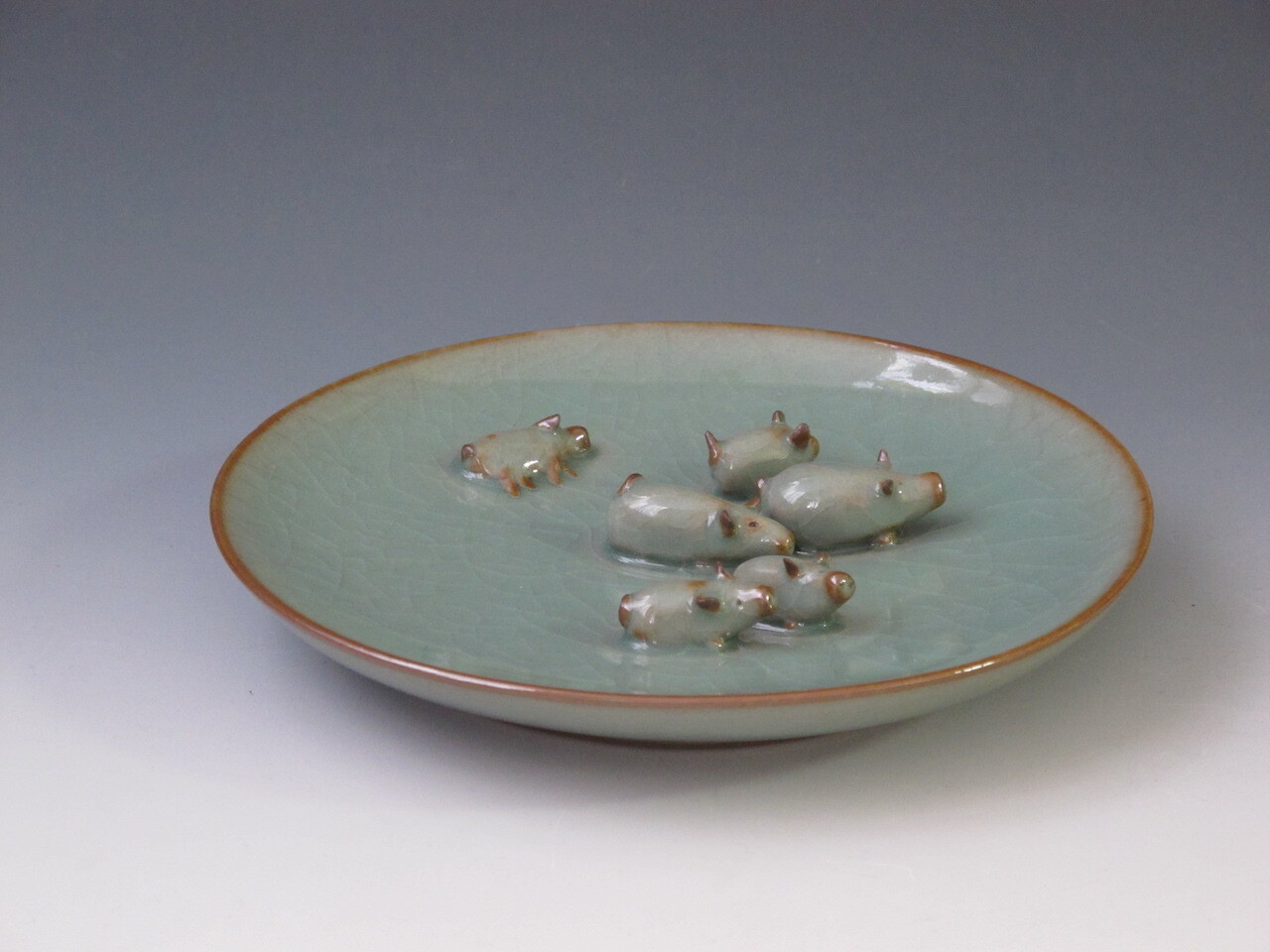
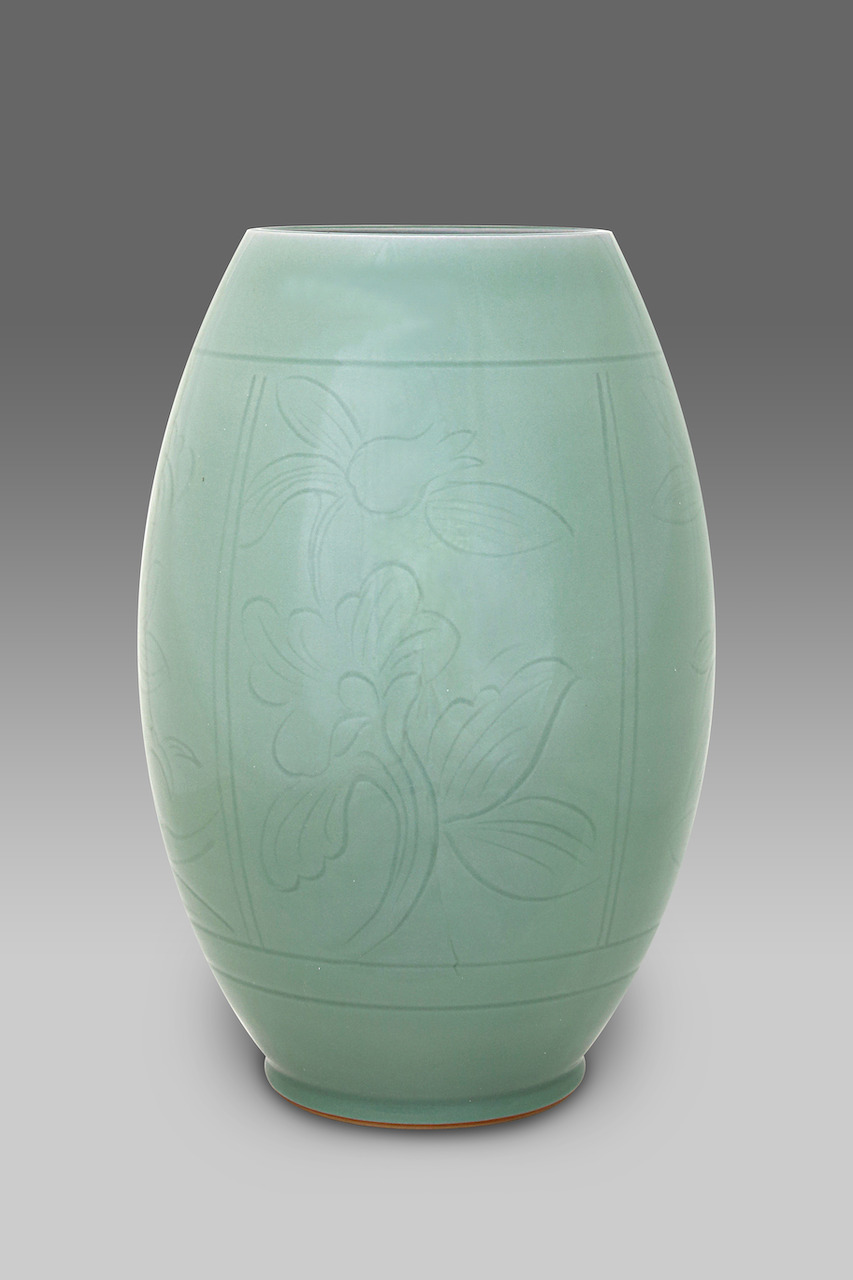
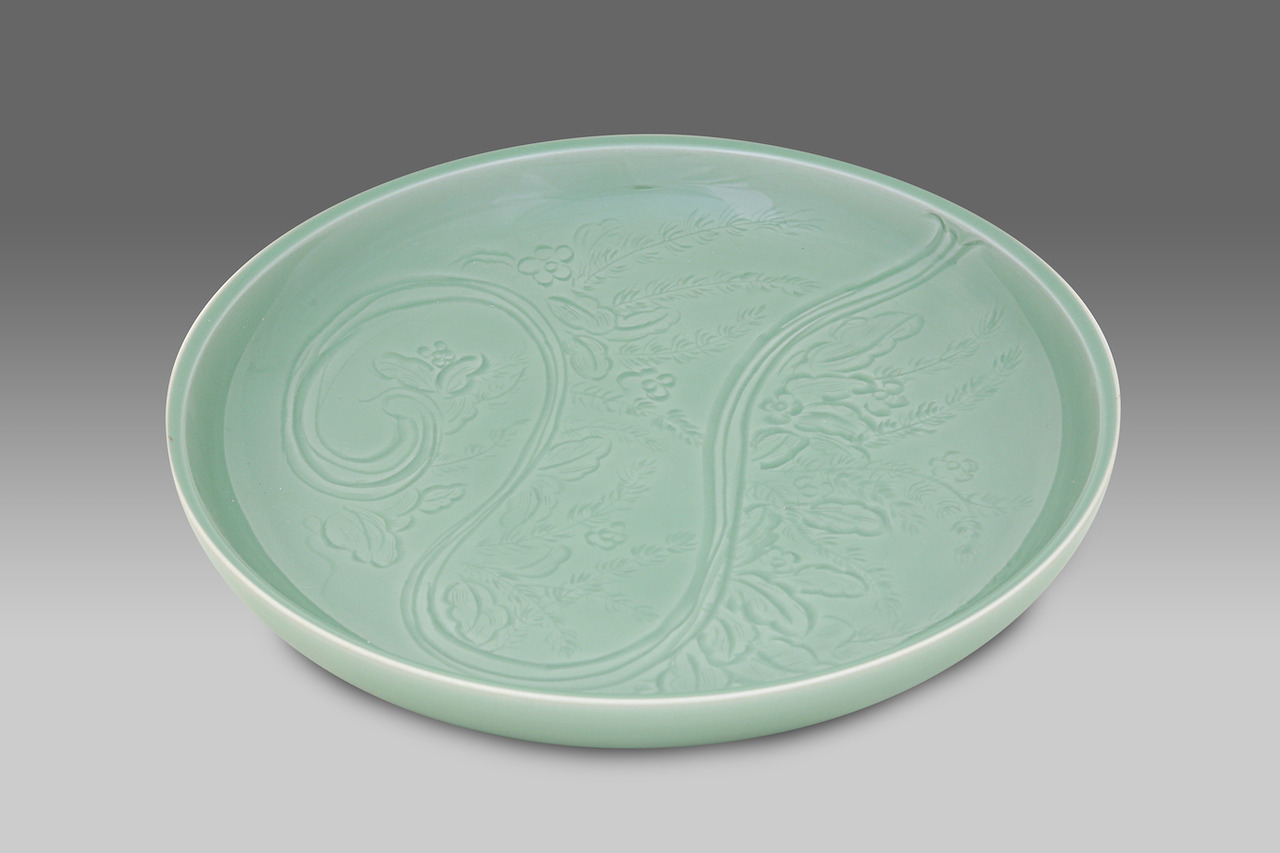
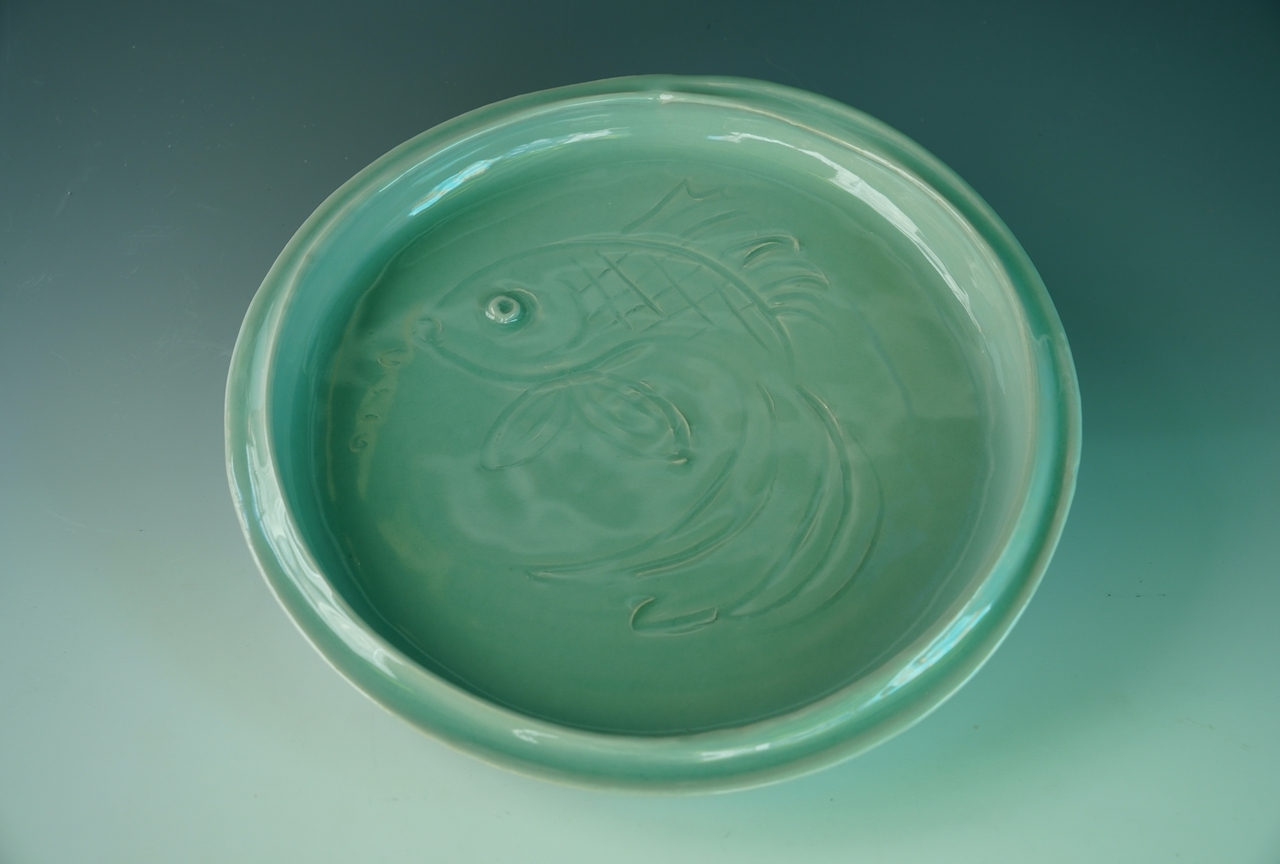
Some highlights include the celadon dish “Joyful” and “Plum green celadon vase with floral decoration,” all exquisite and intricate. Some of my favorites also include “River” and “Plum green celadon dish with fish decoration.” As with all art, simply gazing mindfully at the greenware is perhaps more important that reading or hearing about its intricacies or the mastery by the potter. The profundity of the Longquan kiln celadons speak for themselves visually, beyond even the best analyses by connoisseurs of pottery. Perhaps the second best thing might be listening to Ms. Wong’s own words, who had something to day about each of her exhibit’s sections – in this case, her greenware:
Seeking Longquan art
Longquan celadon is famous for its thin body and thick glaze; observers see the ceramic but they see, too, an object that is like jade. Its brightness is like a mirror and its sound is like a chime. Having received an education in Western ceramic arts, I admire the simple shape and elegant inner charm of Longquan celadon. With such admiration, I embarked on a creative journey in 1996 to broaden my knowledge and skills in this field.
From meeting domestic college professors, visiting ancient kilns, collecting ancient porcelain fragments, and studying the shape and glaze of ancient Longquan celadon to learning various types of traditional techniques from local porcelain craftsmen, I have been tireless in my pursuit of knowledge. I have introduced Western ceramic ideas to local potters, hoping to bring new ways to work with tradition techniques.
After many years of hard work, ‘Ge Kiln’ (older brother kiln), ‘Di Kiln’ (younger brother kiln), ‘Fen Qing’ (powder blue), ‘Mei Zi Qing’ (plum green), ‘Zi Kou’ (a purple rim), ‘Tie Zu’ (an iron-coloured foot), and ‘Kai Pian’ (crackled glaze) are no longer just classical concepts, but are part of my ceramic creations. Using local porcelain clay, techniques, glazes and firing methods, I have made traditional and functional vessels, large and small, as well as a series of modern innovative artworks.
I have enjoyed this journey for over 20 years, and I feel the desire for the ‘emerald beauty of Qianfeng’ and the determination to inherit it no less today than when I began.
In this exhibition, I am grateful that I can share the beauty of Longquan celadon with you. With the achievements accomplished throughout this journey, I hope to forge ahead with all ceramic friends and create a new page of new traditions; together!
(Wong May Lee)


